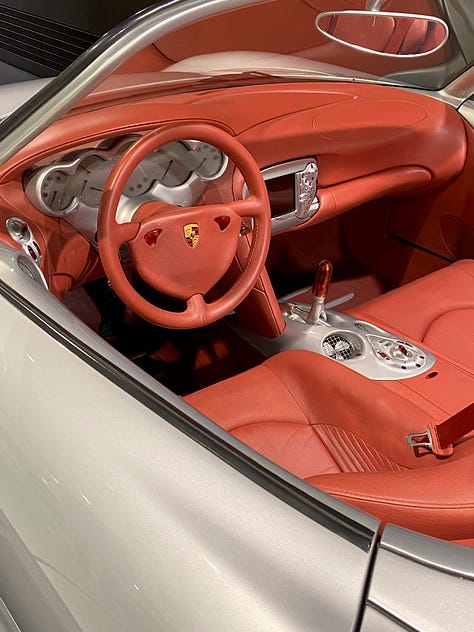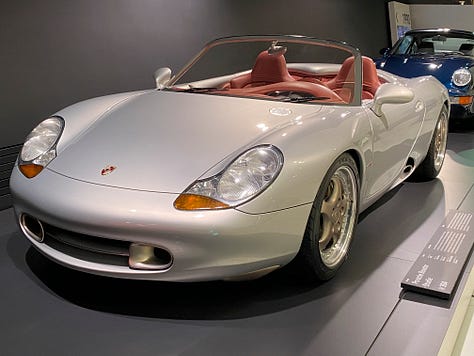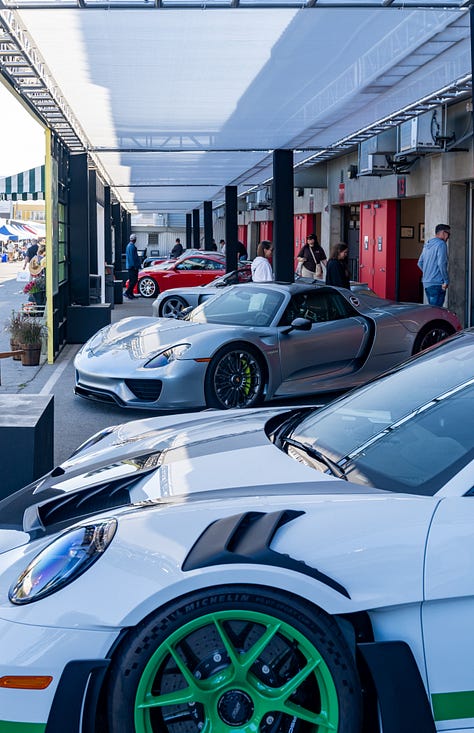I love concept cars
I also hate concept cars...
This week, the Japan Mobility Show in Tokyo has supplied the automotive world with some genuinely exhilarating concept cars. This is fantastic news in an automotive landscape dominated by bland compact SUVs (or hatchbacks and wagons masquerading as SUVs in order not to scare the buying public) and announcements of impossibly fast electric hypercars that only the top of the world’s 1% could afford.
Two of these concepts are stunning, and I hope they become real-world products ASAP: the Mazda Iconic SP and the Honda Prelude concept. Of the two, the Honda looks like it could be on a dealer lot this spring; the Mazda is far more “concept-car” looking but could easily be road-worthy with a few tweaks here and there.
Of course, the industry has a long and torrid history of providing us with juicy concept cars that get everyone excited, only to never produce anything remotely like them or to pull the rug out entirely and say, “Glad you liked that design, but here’s the real WRX.” Sorry, Subaru, but it’s true: you have teased the public too often with concept cars only to fail to deliver.
Some concept cars are just that, concepts. They are design exercises or engineering projects to see what could be done with a particular product or propulsion system. That was certainly the case in the 50s and 60s when truly space-age concepts were debuted at auto shows with no real pretense they would ever be a vehicle a consumer could purchase. These are good things that provide designers room to breathe and exercise their skills while raising brand awareness. I get it.
But over time, many manufacturers trained us to believe the concept was more of a stylized version of a car that would soon be on dealer lots. Porsche has reliably delivered since 1993, when the Boxster concept debuted at the Detroit Auto Show. Yes, the production car was changed from the concept (which was for the better regarding the interior), but the shape and design held firm. The road car’s resemblance to the concept is easy to see. Then, they teased the public with a supercar at the 2000 Paris Motor Show, and the production of the 2004 Carerra GT had only minor revisions from the concept.



Porsche again debuted near production-ready concept cars at the 2010 Geneva Motor Show (918 Spyder) and the 2015 Frankfurt Motor Show (Mission E). The 918 Spyder and the Mission E (which became the Porsche Taycan in production form) were thinly veiled production cars. Minor design or functional changes were made for production, and many of those were obvious items such as cameras for side mirrors, giant wheels, or impossibly low ride height or flared side trim pieces.



But then there is Cadillac—a brand with a storied history but also one of the worst concept car offenders. Remember the 2003 Cadillac Sixteen? Striking, sporting, revelatory for the brand at the time, and never even came close to production. How about the 2011 Cadillac Ciel, a massive droptop that would make any titan of industry drool. Too bad they were never produced.
Cadillac couldn’t stop there; they had to go one better at the 2013 Pebble Beach Concept Lawn and show off the Cadillac Elmiraj. Insert drool emoji here. This car was stunning, better looking than anything from the European luxury competition, and it looked like a production-ready vehicle. Surely, this time, Cadillac would pay off for its customers and make this beauty right? Wrong. Some styling cues found their way into Cadillac’s revamped lineup, but nothing worth discussing.
Which brings me back to this year’s Japan Mobility Show. At a time when the auto industry is pulled in several directions with future propulsion system options and ever-changing political climates, it is refreshing to see that people are still thinking about making fun cars. Not only that, but fun cars that are cleaner (with hybrid or electric powertrains) and, presumably, items a person with a reasonable annual salary can afford.
It’s one thing to introduce a million-dollar hyper electric-car concept with 2000 horsepower; it is far more interesting to see a hybrid or electric small, lightweight* sports car that should be in the average new-car ballpark of $45,000. Not that $45K is cheap, but it is the average nowadays, and it can be attained as opposed to the Rimac Nevera and its ilk.
Even as I write this, Toyota and Nissan have unveiled their concept specials at the show. The Toyota is an electric take on a modern MR2, and I am down for it, but I fear it may be more concept than car. I hope I am wrong because Toyota has been hitting home runs with the GR-series cars (Supra, 86, and Corolla). As for the Nissan concept, maybe that should’ve been left in the drawing room… Thankfully, I don’t think there is any chance of the Hyper Force Concept, or anything approximating it, seeing time in the real world.
The auto news has been very interesting this week because of these concepts. The fact that many were unexpected and surprising moves from brands known for their conservative approach to design is even more exciting. It almost reminds me of the 1990s when the prominent Japanese automakers were cranking out sports cars that people wanted and could afford. I certainly hope we are heading back in that direction. We’ll see.


